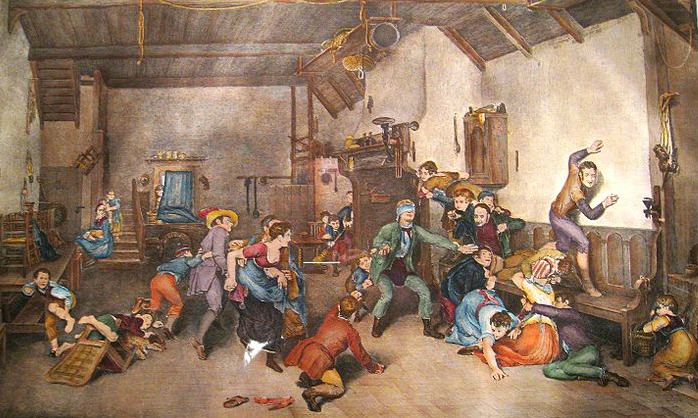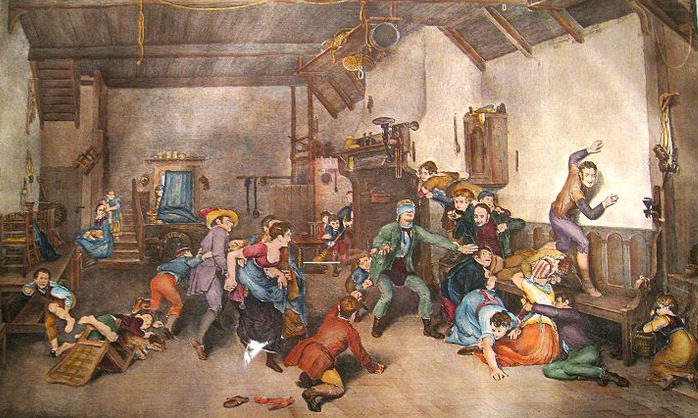What did children do before there were TVs and computers? These old children’s games are taken from the 1920s book Games for the Playground, Home, School and Gymnasium, by Jessie H. Bancroft.
HUCKLE, BUCKLE, BEAN STALK
Number of Players: 5 to 30
How It’s Played: A thimble, cork, ring, or other small object is used for hiding. All of the players leave the room save one, who places the object in plain sight but where it is unlikely to be seen, as on the top of a picture frame, in a corner on the floor, etc. It may be placed behind any other object, as long as it can be seen without moving any object. Once the object has been placed, the players are called back to the room, and all begin to look for it. When one spies it, he does not disclose this fact, but quietly takes a seat, and says, “Huckle, buckle, bean stalk!” which indicates that he knows where the object is. The game keeps on until all of the players have located the object, or until the leader calls the hunt closed. The first one to find the object hides it for the next game. Please view this video.
THE MINISTER’S CAT
Number of Players: 5 or more
How It’s Played: The first player says, “The minister’s cat is an avaricious cat,” using an adjective that begins with “a” to describe the cat. The next player makes a remark about the cat, using the same initial letter for the adjective; for instance, that it is an “aggressive” cat. This is continued, each player using a different adjective beginning with the letter “a,” until the game has gone entirely around the circle. The first player then makes a similar remark about the cat, using an adjective beginning with “b.” This goes around, and so on through the alphabet. Any player who fails must drop out. The player who lasts longest wins.
DUMB CRAMBO
Number of Players: 10 to 30
How It’s Played: The players are divided into two parties. One party goes outside the room; those remaining choose a verb, which is to be guessed by the other party. The outside party is told a word that rhymes with the chosen verb. They consult among themselves, decide on a verb that they think may be the right one, enter the room, and without speaking, act out the verb they have guessed. The inside party must decide from this pantomime if the correct verb has been guessed. If correct, they clap their hands. If not, they shake their heads. No speaking is allowed on either side. If the outside party is wrong in their guess, they retire and try again, repeating this play until they hit on the right word, when the two sides change places.
ANIMAL BLINDMAN’S BLUFF
Number of Players: 10 to 20
How It’s Played: One player is blindfolded and stands in the center of a circle with a stick or cane in his hand. The other players dance around him in a circle until he taps three times on the floor with his cane, when they must stand still. The “blindman” then points his cane at a player, who must take the opposite end of the cane in his hand. The blind man then commands him to make a noise like some animal, such as a cat, dog, cow, sheep, lion, donkey, duck, or parrot. From this the blind man tries to guess the name of the player. If the guess is correct, they change places. If wrong, the game is repeated with the same blind man. The players should try to disguise their voices as much as possible when imitating the animals, and much sport may be had through the imitation. Players may also disguise their height, to deceive the blind man, by bending their knees to seem shorter or rising on toes to seems taller.
BLIND BANANA FEED
Number of Players: 6 to 20
How It’s Played: Blindfold several couples. Give a peeled banana to each person. Have the couples clasp left hands, and at the signal to start they begin trying to feed one another. It may get messy, so it is well to provide bibs for the players by cutting a hole in a sheet of newspaper and dropping it over the head. Whichever team finishes their bananas first is the winner









